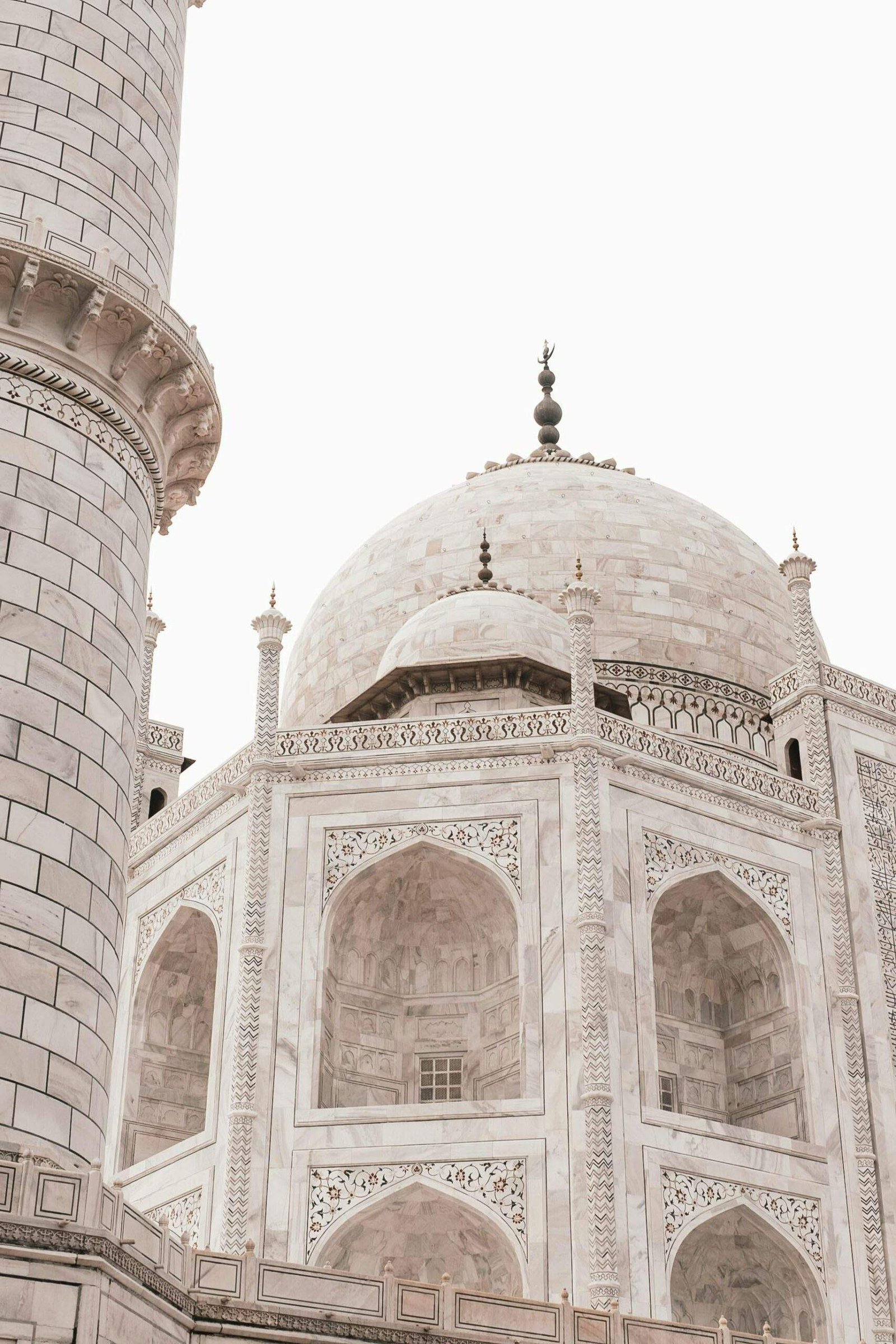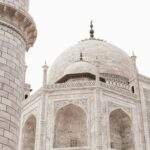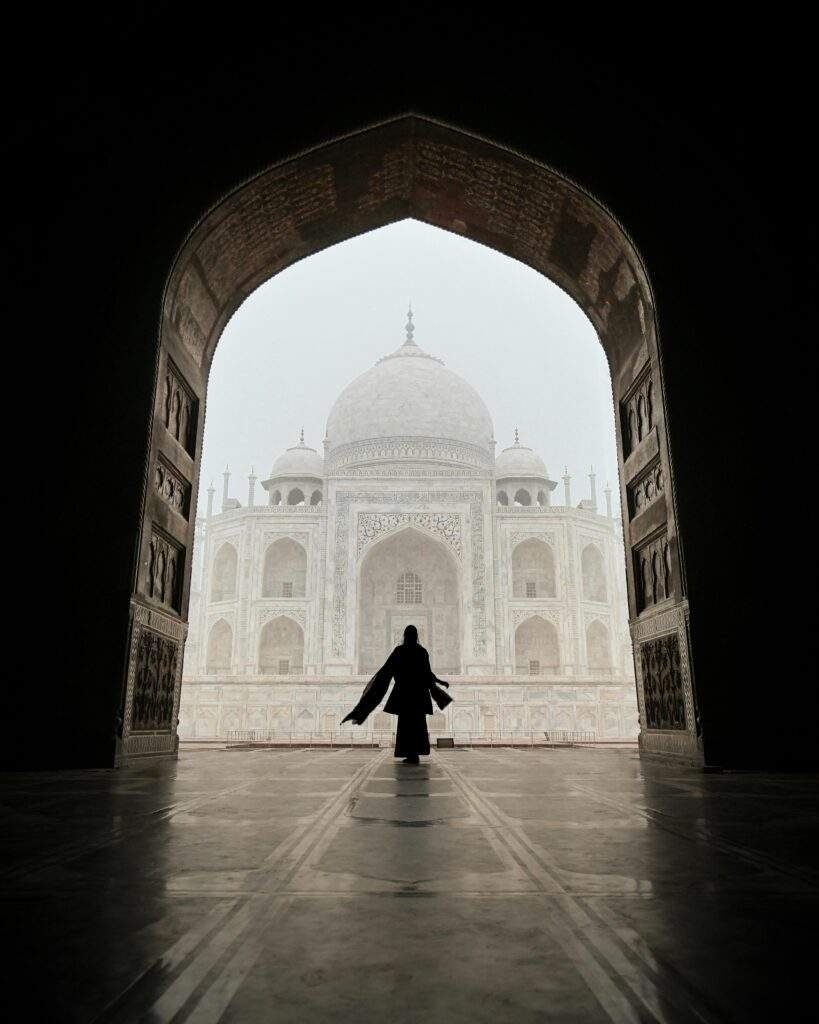
Nestled in the heart of Uttar Pradesh, Agra stands as a living monument to India’s magnificent Mughal legacy. While Delhi may command political attention as the nation’s capital, Agra undoubtedly captures global fascination primarily due to the Taj Mahal. This architectural masterpiece, recognized as one of the modern world’s seven wonders, draws millions of international visitors annually to marvel at its perfection. However, the gleaming white marble monument represents just one facet of this remarkable city, where centuries of history have created a treasure trove of cultural and architectural marvels. Beyond the iconic Taj, Agra offers a fascinating journey through time with its rich historical sites, vibrant markets, and timeless charm that continues to enchant travelers from across the globe.
Fun Facts About Agra
Agra holds numerous fascinating distinctions that make it truly unique among Indian destinations. Most notably, it’s the only city in India that hosts three UNESCO World Heritage Sites: the Taj Mahal, Agra Fort, and Fatehpur Sikri. These monuments collectively tell the story of the mighty Mughal Empire that once ruled the Indian subcontinent from this very region.
One particularly fascinating aspect of Agra’s monuments is how they interact with light throughout the day. The Taj Mahal, constructed from translucent white marble, appears to change colors with the shifting daylight – displaying a pinkish hue in the morning, gleaming white during midday, and transforming to a golden tint under moonlight. This magical property has enchanted visitors for centuries and continues to amaze photographers and visitors alike.
Most travelers don’t realize that the impressive Agra Fort wasn’t originally built by Shah Jahan (the Taj Mahal’s creator). The fortress began as a brick structure established by Rajput kings before the Mughals rose to power. It later fell under Lodi dynasty control until Emperor Akbar extensively renovated it using distinctive red sandstone. The current structure that awes visitors today was primarily shaped by Shah Jahan’s later modifications, creating a fascinating architectural palimpsest of India’s royal history.
The Yamuna River flowing through Agra holds its own historical significance – it was once called the “Blue River” due to its remarkably clear waters that allowed people to see straight to the riverbed. Today, the river faces significant pollution challenges, though restoration efforts continue to preserve this important waterway that has shaped Agra’s development for centuries.
Agra also maintains surprising commercial significance beyond tourism – it stands as India’s largest footwear manufacturing hub. Additionally, the city gifted the culinary world with “petha,” the famous translucent sweet candy that originated in Mughal royal kitchens and has since become a beloved treat throughout India and beyond.
Best Time to Visit
Agra experiences distinct seasons that dramatically affect visitor comfort and sightseeing opportunities. Planning your visit during the right time of year can significantly enhance your experience of this historical city.
Winter (October to March) offers the most pleasant weather conditions for exploring Agra. Temperatures typically range from 8°C to 30°C (46°F to 86°F), creating comfortable conditions for walking between monuments and spending time outdoors. December and January can become quite chilly, especially in the early mornings when fog sometimes delays sunrise views of the Taj Mahal. However, this remains the peak tourist season when visitor numbers and accommodation rates reach their highest points.
Summer (April to June) brings extremely challenging conditions with temperatures regularly exceeding 40°C (104°F). The scorching heat makes extended outdoor exploration difficult and potentially dangerous during midday hours. If summer travel cannot be avoided, plan your sightseeing activities for early mornings or late evenings, and ensure you stay properly hydrated throughout your visit. The advantage of summer travel includes fewer crowds and potentially lower accommodation rates, which might appeal to budget-conscious travelers seeking a more intimate experience.
Monsoon (July to September) transforms Agra with refreshing rainfall that cools the previously scorching temperatures and turns the landscape vibrant green. While occasional heavy downpours might temporarily disrupt sightseeing plans, the monsoon season offers a unique perspective on the monuments against dramatic cloudy skies. Photographers often appreciate the dramatic lighting conditions during breaks in the rainfall. Humidity levels rise significantly during this period, making it important to dress in light, breathable clothing.
For the optimal balance of comfortable weather and manageable crowds, consider visiting during the shoulder seasons of October or February-March, when temperatures remain pleasant while avoiding the peak December-January tourist rush. The Uttar Pradesh Tourism Development Corporation also recommends these periods for the best overall experience.

How to Reach Agra
Agra’s status as a premier tourist destination means it’s well-connected to other major Indian cities through various transportation options, making it accessible for both international and domestic travelers.
By Air: While Agra does have an airport, it primarily serves military operations with limited commercial flights. Most international travelers arrive at Delhi’s Indira Gandhi International Airport, located approximately 230 km from Agra. From Delhi, visitors typically continue their journey by road or rail to reach the city of the Taj Mahal.
By Train: Rail travel represents one of the most convenient and authentic ways to reach Agra. The city features several railway stations, with Agra Cantt serving as the primary terminal. Multiple trains connect Agra to major Indian cities daily. From Delhi, the high-speed Gatimaan Express completes the journey in just 100 minutes, while other regular trains take 2-3 hours. Trains also run frequently from cities like Jaipur, Gwalior, and other significant destinations across northern India. The Indian Railways official website allows visitors to book tickets online up to 120 days in advance.
By Road: Excellent highway connections make reaching Agra by road straightforward from nearby cities. The six-lane Yamuna Expressway connects Greater Noida (near Delhi) with Agra over 165 km, reducing travel time by approximately four hours compared to older routes. Regular bus services operate from Delhi’s Kashmere Gate ISBT, Jaipur, and other nearby cities. For more comfort and flexibility, travelers can hire private taxis or cars with drivers for the journey, which can be arranged through most hotels or travel agencies.
Within Agra, transportation options include auto-rickshaws, cycle rickshaws, and taxis. Ride-sharing apps also operate in the city, offering convenient and relatively hassle-free transportation. Many visitors find hiring a local guide with a vehicle particularly valuable for efficiently exploring the city’s scattered attractions in limited time.
Cost of Living and Budget Guide
Agra offers excellent value for travelers compared to many other Indian tourist destinations. According to cost comparison data, Agra is approximately 25% cheaper than Delhi (excluding rent), with restaurant prices being nearly 40% lower and grocery costs 18% lower. This affordability makes Agra accessible for travelers across various budget levels.
Accommodation Costs:
- Budget options (hostels/guesthouses): ₹500-1,500 ($6-18) per night
- Mid-range hotels: ₹3,000-7,000 ($36-84) per night
- Luxury hotels and resorts: ₹8,000-20,000+ ($96-240+) per night
The city hosts more than 10 five-star hotels, making it the city with the second-highest concentration of luxury accommodations in North India after Delhi. For the latest hotel deals and reviews, travelers can check MakeMyTrip’s Agra hotel listings, which provide options across all budget categories.
Food and Dining:
- Basic meal at an inexpensive restaurant: ₹200 ($2.40)
- Three-course meal for two at a mid-range restaurant: ₹1,000 ($12)
- Fast food combo meal: ₹275-363 ($3.30-4.35)
- Local street food snacks: ₹50-100 ($0.60-1.20)
Transportation:
- One-way ticket on local public transport: ₹33 ($0.40)
- Taxi start (normal tariff): ₹100 ($1.20)
- Taxi per kilometer: ₹30 ($0.36)
- Auto-rickshaw for short trips: ₹50-150 ($0.60-1.80)
Sightseeing:
- Taj Mahal entry fee: ₹1,100 ($13) for foreign tourists, ₹50 for Indian nationals
- Agra Fort entry fee: ₹650 ($7.80) for foreign tourists, ₹35 for Indian nationals
- Fatehpur Sikri entry fee: ₹610 ($7.30) for foreign tourists, ₹40 for Indian nationals
- Cinema ticket: ₹200 ($2.40)
Daily Budget Estimates:
- Budget travelers: ₹2,000-3,500 ($24-42) per day
- Mid-range travelers: ₹4,000-8,000 ($48-96) per day
- Luxury travelers: ₹10,000+ ($120+) per day
Bottled water costs approximately ₹10-27 ($0.12-0.32) depending on size, and travelers should budget for additional expenses like shopping for souvenirs, marble handicrafts, leather goods, and the famous Agra petha sweet that no visitor should leave without trying.
Suggested Itineraries
2-Day Itinerary: Agra’s Essential Highlights
Day 1: Majestic Monuments and Local Flavors
- Morning: Start your day early with a sunrise visit to the Taj Mahal. Arriving at dawn not only provides the most magical light for photographs but also helps you avoid the crowds that gather later. Spend 2-3 hours exploring this architectural masterpiece, appreciating its perfect symmetry, intricate marble inlay work, and the love story behind its creation.
- Mid-Morning: Head to Agra Fort, located just 2.5 km from the Taj Mahal. This impressive red sandstone fortress housed the Mughal emperors and showcases the dynasty’s architectural evolution. Don’t miss the Diwan-i-Am (Hall of Public Audience), Diwan-i-Khas (Hall of Private Audience), and the tower where Shah Jahan was imprisoned by his son Aurangzeb, gazing at his beloved Taj Mahal in the distance.
- Lunch: Savor authentic Mughlai cuisine at a local restaurant. Try specialties like butter chicken, biryani, kebabs, and the famous local sweet petha. TripAdvisor’s restaurant listings offer reliable recommendations for dining options in the city.
- Afternoon: Visit Itimad-ud-Daulah’s Tomb, often called the “Baby Taj.” This exquisite marble mausoleum was built by Empress Nur Jahan for her father and features some of the finest marble inlay work in Agra. The tomb predates the Taj Mahal and showcases the transition from red sandstone to white marble in Mughal architecture.
- Evening: Take a peaceful boat ride on the Yamuna River for a different perspective of the Taj Mahal. Watching the sunset cast its golden glow on the white marble is a magical experience. Afterward, explore Mehtab Bagh, a garden complex across the river that offers spectacular views of the Taj Mahal, especially during sunset
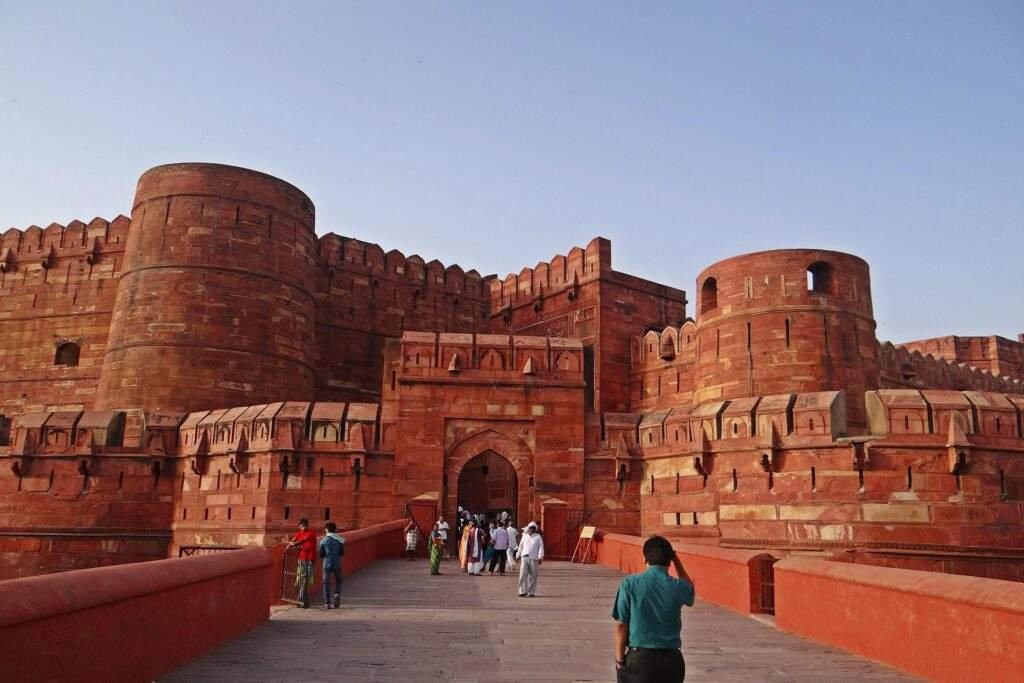
Day 2: Beyond the Famous Landmarks
- Morning: Take a half-day excursion to Fatehpur Sikri, located about 40 km from Agra. This abandoned city was built by Emperor Akbar as his capital but was deserted shortly after due to water shortages. Explore the impressive Buland Darwaza (one of the tallest gateways in the world), Jama Masjid, and the tomb of Sufi saint Salim Chishti.
- Lunch: Return to Agra and enjoy lunch at a restaurant serving local specialties. Try street food favorites like chaat, kachori, and more petha varieties from the city’s renowned sweet shops.
- Afternoon: Visit Akbar’s Tomb at Sikandra, where the great emperor designed his own mausoleum. The complex features beautiful gardens and an impressive gateway with unique architectural elements that blend Hindu and Islamic styles.
- Evening: Explore the local markets like Sadar Bazaar and Kinari Bazaar for souvenirs, leather goods, marble handicrafts, and textiles. End your day with a cultural show highlighting the region’s traditional music and dance traditions at one of the heritage hotels or cultural centers.
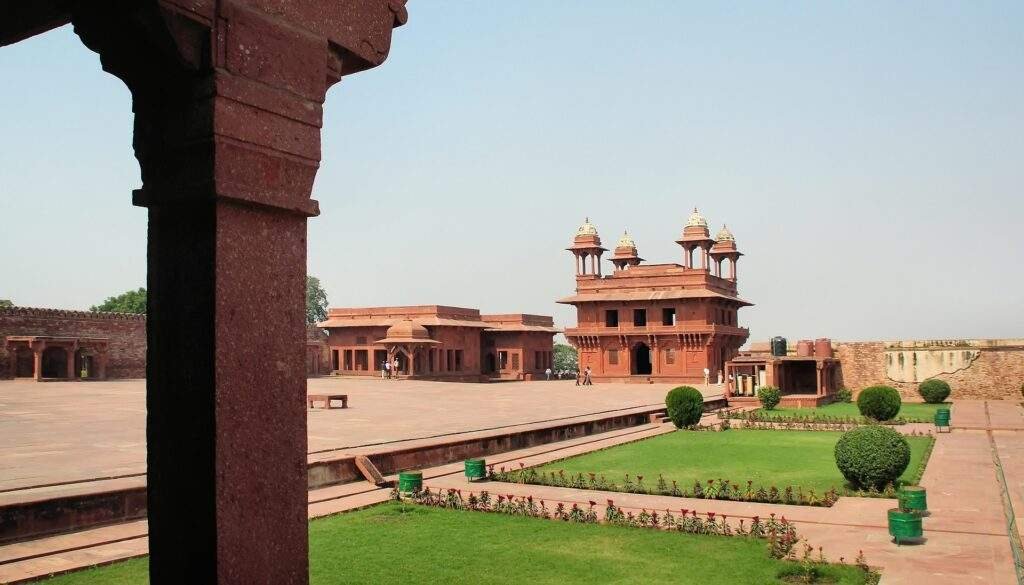
3-Day Itinerary: Additional Experiences
If you have an extra day in Agra, consider these experiences to deepen your understanding of the region:
- Visit Chini Ka Rauza, a Persian-style tomb known for its unique glazed tile work
- Explore Akbar’s Church, a historical Christian church built under Emperor Akbar’s religious tolerance policy
- Visit a marble workshop to see artisans creating inlay work similar to that on the Taj Mahal
- Experience the Wildlife SOS Elephant Conservation and Care Center just outside Agra
- Take a cooking class to learn about authentic Mughlai cuisine
- Explore the less-visited Korai Village for an authentic rural experience
For more detailed itineraries and tour options, you can consult the Agra Tourism section on Thomas Cook India, which offers comprehensive guides to exploring the city efficiently.
Top Attractions in Agra
The Taj Mahal
No visit to Agra is complete without experiencing the Taj Mahal, the world’s most famous monument to love. Built by Emperor Shah Jahan between 1631 and 1648 as a mausoleum for his beloved wife Mumtaz Mahal, this architectural marvel represents the pinnacle of Mughal craftsmanship. The perfect symmetry, translucent white marble, and intricate inlay work featuring precious and semi-precious stones make it one of the most breathtaking structures on earth. The monument and surrounding gardens span 42 acres, with the tomb itself rising on a marble platform that seems to float above the landscaped gardens. Visit at sunrise for the most magical experience, when the first rays of light give the marble a soft pink glow.
Agra Fort
Just 2.5 kilometers from the Taj Mahal stands the imposing Agra Fort, a UNESCO World Heritage Site that served as the primary residence of the Mughal emperors until 1638. This massive red sandstone structure houses a complex of palaces, audience halls, mosques, and gardens within its 2.5-kilometer-long walls. Of particular interest is the Diwan-i-Khas (Hall of Private Audience), where the emperor would meet with important dignitaries, and the Musamman Burj, the tower where Shah Jahan spent his final years as a prisoner, gazing at the Taj Mahal he had built for his beloved wife.
Fatehpur Sikri
Located about 40 kilometers from Agra, Fatehpur Sikri offers a fascinating glimpse into Akbar’s vision and architectural brilliance. This entirely preserved ghost city served as the Mughal capital for just 14 years before being abandoned due to water shortages. The complex includes the grand Buland Darwaza (Victory Gate), the tomb of Sufi saint Salim Chishti, the five-story Panch Mahal palace, and numerous other buildings that combine elements of Persian, Islamic, and Hindu architectural styles.
Itimad-ud-Daulah’s Tomb (Baby Taj)
Often called the “Baby Taj” or “draft of the Taj Mahal,” this exquisite tomb was built between 1622 and 1628 by Empress Nur Jahan for her father, Itimad-ud-Daulah. This smaller but equally beautiful mausoleum features the first extensive use of pietra dura (stone inlay work) in Mughal architecture, a technique that would later be perfected in the Taj Mahal. The precision of the inlaid floral and geometric patterns is astounding, and many consider the artistry here even more refined than at the Taj Mahal.
Mehtab Bagh (Moonlight Garden)
Located directly across the Yamuna River from the Taj Mahal, this perfectly aligned garden complex offers perhaps the most stunning views of the monument, especially during sunset. Originally built as an extension of the Taj Mahal complex, Mehtab Bagh was designed as a place to view the Taj by moonlight. Today, it’s an ideal spot for photographers seeking that perfect shot of the Taj Mahal with the Yamuna River in the foreground.
Akbar’s Tomb at Sikandra
Located about 10 kilometers from Agra, this magnificent tomb was commissioned by Emperor Akbar himself and completed by his son Jahangir. The structure combines Hindu, Christian, Islamic, Buddhist, and Jain motifs, reflecting Akbar’s inclusive religious philosophy. The tomb is set within a vast garden with four gateways, the main one featuring four white marble minarets similar to those of the Taj Mahal.
For more information about these and other attractions in Agra, visit the Incredible India’s official Agra tourism page, which provides comprehensive details about each site.
Travel Tips for Agra
Best Visiting Hours: Arrive at major monuments early in the morning to avoid crowds and harsh midday heat. The Taj Mahal opens at sunrise, and this magical time offers both fewer visitors and the most beautiful lighting for photographs. Note that the Taj Mahal is closed on Fridays for prayers, so plan your itinerary accordingly.
Stay Hydrated: Agra experiences extreme temperatures, particularly during summer months. Carry water bottles throughout your visit and consider electrolyte supplements during hot weather. Most hotels and restaurants offer filtered or bottled water, which is essential for foreign visitors.
Dress Appropriately: Modest clothing that covers shoulders and knees is respectful when visiting religious sites and monuments. Comfortable walking shoes are essential as you’ll be traversing uneven surfaces and potentially removing shoes at certain sites. During summer months, lightweight, breathable fabrics are recommended to handle the heat.
Local Transportation: Auto-rickshaws and cycle rickshaws are convenient for short distances within the city. Always negotiate and agree on fares before starting your journey. For a more comfortable experience, consider hiring a car with driver for the day or using ride-sharing apps available in the city. According to TripAdvisor forum posts, many travelers recommend hiring government-approved guides for the most informative experience.
Security Considerations: While Agra is generally safe for tourists, exercise normal precautions as you would in any tourist destination. Keep valuables secure, especially in crowded areas. Avoid isolated areas after dark and be cautious of common tourist scams involving “friendly” guides or suspiciously cheap souvenirs.
Photography: While photography is permitted at most monuments (except certain areas inside the Taj Mahal), tripods might require special permission. The best photograph locations for the Taj Mahal include Mehtab Bagh and from the Yamuna River. Many professional photographers recommend visiting during the golden hours (early morning or late afternoon) for the most flattering light.
Shopping Tips: Agra is famous for marble handicrafts, leather goods, and embroidered textiles. Expect to bargain in local markets – typically start at 50-60% of the initial asking price. For fixed-price shops, quality is often more reliable though prices will be higher. The Agra Tourism section on Thomas Cook India offers good advice on shopping in the city.
Cultural Etiquette: Remove shoes when entering religious buildings. When photographing locals, always ask permission first. Tipping for services (10-15%) is appreciated but not mandatory in restaurants, though it’s customary to tip guides and drivers who provide good service.
Internet and Connectivity: Most hotels and many cafes offer Wi-Fi access. Local SIM cards are inexpensive and provide good mobile connectivity throughout the city, making it easy to navigate using map applications and stay connected.
Conclusion
Agra transcends its identity as merely the home of the Taj Mahal. This historic city offers a profound connection to India’s magnificent Mughal past through its extraordinary collection of monuments, vibrant culture, and timeless beauty. From the perfect symmetry of the Taj Mahal at sunrise to the imposing grandeur of Agra Fort, from the abandoned splendor of Fatehpur Sikri to the intricate charm of the “Baby Taj,” Agra rewards visitors with experiences that cannot be found elsewhere.
The city’s relative affordability compared to other major Indian tourist destinations makes it accessible for travelers of all budgets. While the extreme summer temperatures present challenges, visiting during the more pleasant months between October and March allows for comfortable exploration of all Agra has to offer. The well-established tourism infrastructure ensures that international visitors can navigate the city with relative ease while still experiencing authentic cultural encounters.
Whether you’re a history enthusiast, an architecture lover, a photographer seeking perfect captures, or simply a curious traveler, Agra offers experiences that create lasting memories. As you stand before these magnificent monuments, you’re witnessing not just stunning architecture but stories of love, power, artistic excellence, and cultural heritage that have fascinated the world for centuries. Agra invites you to become part of its continuing story – one that has inspired wonder and admiration across generations and continues to captivate all who visit.
For more comprehensive information about planning your trip to Agra, visit the official Incredible India tourism website, which provides up-to-date details on attractions, events, accommodations, and travel advisories.

